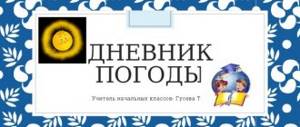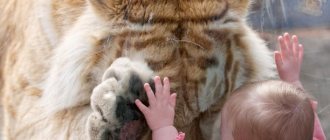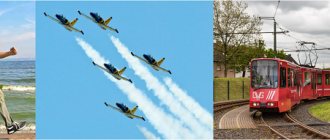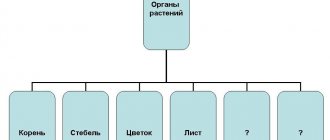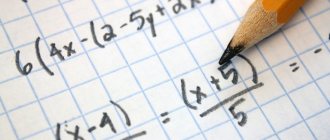Exercises and muscles
We will not delve into anatomy and physiology. We will analyze only those muscles that you will need to know for training in the gym .
Let's start from the bottom.
Calf muscles
The calf muscles are usually the least favorite muscles among athletes. Unloved not because they are ugly, but because they are difficult to train and practically do not grow. Although this is true, I advise you to train your calf muscles once a week. Maybe they won’t increase visually, but they will be stronger, that’s for sure.
As you can see, the lower leg consists of more than just the calf muscles. But we only need the calf muscles. Other muscles of the lower leg are not specifically trained.
What is the function of these muscles? Very simple, they lift our body up, lifting the heel off the floor and lower it down. The largest amplitude of movement occurs when a person stands with his toe on a rise or step and you can still go lower than the toe.
Common ways to train the calf muscles are calf raises while standing or sitting in a machine. You can also train your calves with a barbell or dumbbells while standing on a stand.
If you do this exercise with your toes inward, the outer part of your calves is trained more. If the toes are pointed outward and the heels are closer, then the inner part of the calf muscles is trained more.
Biceps femoris
Biceps femoris, or also called the biceps femoris muscle. It is located on the back of the thigh. Below the buttocks. The job of this muscle is to bend the leg at the knee joint. Only this function.
And therefore exercises to train this muscle . This is a lying leg curl in a machine . Or straight-legged bends with a barbell on your shoulders. Although they say that your legs are straight, you need to bend them slightly at the knee joint when bending over.
Quadriceps femoris
The quadriceps femoris muscle is located directly opposite the biceps femoris, on the front surface.
Consists of four heads. The function of this muscle is to extend the leg at the knee joint. In fact, this muscle has more functions, but we take what we need for training.
Accordingly, all exercises that extend the leg at the knee joint are suitable for training.
These are exercises: leg straightening while sitting on a machine , squats and lying leg presses in various machines. Hack machine, Smith machine, bench press . Squats with a barbell on your shoulders.
We are not talking now about which simulators are better or worse. The goal of this article is to make sure that you can easily navigate the exercises and know what muscles they train.
Gluteal muscles.
The gluteal muscles are located you know where. They extend the leg at the hip joint. They work when you take your leg back, or take your leg bent at the knee and brought it to your stomach.
In other words, the leg is pressed to the stomach. When the leg straightens, it extends in two joints: the hip (the buttock works) and the knee (the quadriceps femoris works).
Exercises for the buttocks: plie squats (squats with legs wide apart). Pulling the leg back while standing in the simulator. Regular squats with a barbell on your shoulders. In order for the buttocks to work in this exercise, you need to go as low as possible. Hack-machine, Smith-machine.
The bench leg press machine weakly trains these muscles.
Rectus abdominis muscle
Our favorite abs. The press bends the torso inward. The sternum reaches towards the hip joints and vice versa. And this is very important. If you do lower crunches without lifting your lower back from the back of the machine, then you are working your thigh muscles, not your abs.
Likewise, don't just fold in half when performing an overhead crunch. Watch the video below for more details.
exercises have been invented to train the abs . The main thing is not to fold in half, but to slouch, pulling the pectoral muscles towards the pelvis. And remember to concentrate. Concentration is the additional tension of the muscles by willpower at the moment of the greatest contraction of the abs.
Obliques
I believe that the oblique and serratus abdominal muscles do not need to be trained; fat does not decrease from this training. The muscles are very small in size, so you can’t increase them significantly. In general, you will only lose training time.
But this does not mean that I categorically do not advise you, if you like it, then do it - please. It is absolutely certain that these exercises will improve the functioning of internal organs. Gastrointestinal tract.
Rectus dorsi muscle
The rectus dorsi muscles are two bands that start from the tailbone and reach the top of the spine. These muscles help us straighten and bend forward. Only a small part of them is visible in the picture. Called the spinal extensor muscles.
Exercises for the extensor muscles, you need ones that will straighten your back.
Hyperextension for the rectus dorsi muscles, downward bends with a barbell on the shoulders . This muscle also actively works when performing deadlifts: deadlifts, bent-over barbell rows, horizontal block rows . When doing squats with a barbell on your shoulders, the rectus dorsi muscle also helps other muscles support the spinal column.
I also want to say that our muscles do not work individually. You've probably already noticed this. When movement occurs, entire muscle groups are involved in the work. Training is based on this principle.
We try to do not isolated exercises, but basic ones. This way we save time. Improving the quality of training. (we work the muscles better and more efficiently). And we get better results if we don’t train with isolated exercises.
Latissimus dorsi muscles
The latissimus dorsi is one of the largest muscles in the upper half of the body. These are strong muscles and respond well to training. In our youth, the guy who had the triangle of his back looming from behind was considered strong. This triangle is precisely defined by the two latissimus dorsi muscles and the shoulders.
The work of the latissimus muscles is that they pull the arm towards themselves. And the raised hand is lowered down. Based on this, it turns out that the following are suitable for training these muscles: pull-ups on the horizontal bar , overhead and horizontal pull- , bent- over dumbbell rows , bent- over barbell rows.
Pull-ups make the muscles wider, and pull-downs (except for lat pull-downs) make them thicker.
Trapezius muscles of the back
The trapezius is also located on the back; it is partially superimposed on top of the latissimus dorsi muscles. It has three heads, lower middle and upper. The lower one pulls the shoulder blade down, the middle one brings both shoulder blades together, and the upper one lifts the shoulders up.
Usually only the upper trapezius is trained specifically. Shrug exercise . The middle and lower trapezius are trained in the same way as the latissimus muscles with various rows.
Shrugs develop the muscles used in the swing to hit or throw in baseball, basketball and javelin, as well as the serve (and cut) in volleyball and tennis.
A strong neck and trapezius provide excellent insurance when performing French presses or simple barbell overhead presses and heavy squats. When performing a shrug with a barbell behind your back, you develop correct posture, which you need not only in sports, but also in everyday life, as it significantly reduces the risk of spinal injury.
Exercise technique
Stand up straight. Your feet should be shoulder-width apart and your knees slightly bent. Have a partner give you the barbell from behind. It should be taken with an overhand grip (with your palms facing back). The distance between the hands is slightly wider than the shoulders.
Straighten up, pull your shoulders back and lift your chest slightly. Pull your stomach in so that your back does not bend and the natural curve of the spine is maintained. Your arms should be completely straight behind your back. In the starting position, the bar is located at the bottom of the buttocks. Look straight ahead. Inhale and hold your breath, raise your shoulders as high as possible. Do not bend your arms; they should be straight throughout the entire approach. All movements should occur only in the shoulders! The legs, chest and back remain motionless. When you reach the top point, you need to tighten your trapezius with all your might and try to hold the barbell in this position for 1-2 seconds (to achieve maximum muscle contraction). As you exhale, gradually lower your shoulders.
Recommendations
You can't hunch over! Be sure to maintain correct posture throughout the exercise. To maximally target your trapezius, move your shoulders back and lift your chest higher. Keep your torso in this position throughout the entire approach. In this exercise, the range of motion is less than in conventional shrugs, when the barbell is in front of the hips. However, shrugs with a barbell behind your back are much more effective, especially for improving posture. Moreover, shrugs with a barbell behind your back prevent the development of round shoulders, which is a known problem with frequent bench presses and classic shrugs.
You should not use a barbell that is too heavy, as it will greatly reduce the already small range of motion. You should hold your breath while lifting the barbell. This breathing technique will provide the muscles that hold the back in the correct position with the development of much greater force than with normal breathing (by about 20%). This will allow you to increase the weight of the bar without changing the range of motion.
The chin should always be slightly raised, keep your head straight, look straight ahead, pull your shoulders back, and arch your chest forward. When you tilt your head down or to the side, you risk injury to your neck or back. Do not bend your elbows while raising and lowering the barbell, or the range of motion will be reduced and the load on the trapezius will decrease.
And the upper trapezius is well trained by squats with a barbell on the shoulders and deadlifts . If you do at least one of these exercises, then the upper trapezius is guaranteed to you.
Pectoral muscles
The pectoral muscles know everything. They have lower, middle and upper beams.
Function of the pectoral muscles: move the arm moved to the side to a position in front of you.
They usually train with bench presses. Dumbbell bench press , bench press . Lying dumbbell flyes . Dips .
If you do presses and flyes lying on your back with your head down. Then the lower part of the pectoral muscle works more. And when doing push-ups on parallel bars, the lower bundles also work more. If you do bench presses and flyes lying on your back with your head up, then the upper part of the muscle.
Because the emphasis on the chest muscles (both head down and head up) is very slight. I recommend training your muscles in a normal horizontal position.
Shoulder muscles
Shoulder muscles - Deltas. They are divided into three bundles: anterior, middle, and posterior.
The one in front raises his hand in front of him. The middle one raises his hand from below through his side to the top. The rear hand extended forward is pulled back across the side.
Based on what was written above, the following exercises are suitable for training deltas: lifting dumbbells in front of you - front beams.
Lateral dumbbell raises —medium bunches work. Raising dumbbells through the sides upward, the torso is tilted horizontally to the floor face down - rear deltoids.
Presses with dumbbells or barbell while sitting or standing. The front and middle bundles of deltas are worked out. We lower the barbell in front of us; if we lower it behind our head, then our shoulders will not work.
Biceps
The biceps is the biceps brachii muscle. She bends her arm at the elbow joint and turns her palm up (supination). Consists of 2 heads, external and internal.
I would like to dwell separately on the moment of supination. Here you stand with your hands down. Bend your arm at the elbow joint, and then turn your palm up . What happens? If you did everything correctly, your biceps will shrink (strain) even more.
Now knowing this point, you will understand why biceps need to be trained only with a straight barbell.
Z-bars, curved bars and racks are not suitable for training biceps. Yes, it is more convenient to hold the barbell in them, but there is no full muscle tension due to the fact that there is no supination (turning the palm up). And the muscle does not tense completely.
Exercises for training biceps: standing barbell curls , standing or sitting dumbbell biceps curls (with supination) , Larry Scott bench , seated concentrated biceps curls , reverse grip pull-ups. In any exercise where the arm is bent at the elbow joint, the biceps work.
Triceps
We continue our lesson about which muscles work in the exercises you did. The triceps is opposite the biceps on the back of the humerus.
It has three heads: outer, middle and inner. The work of the triceps is to extend the arm at the elbow joint and pronate the palm (lower the palm down). Therefore, all presses and lowering of the arms on the triceps should be done in the same way as the biceps on a flat barbell. To perform pronation. This way the triceps are better tensed. Better quality.
Exercises for training triceps: Bench press , close grip bench press . Dips . Lowering the block on the triceps machine . All French presses with a barbell or dumbbell.
In general, the triceps will work in any bench press. For example, standing barbell press. The triceps work together with the shoulders. But training the triceps with this exercise is not convenient. And they don't get the extra workload.
Forearm muscles.
The muscles from the elbow to the hand are called the forearm muscles. They are responsible for the work of the brush. All rotating movements, up and down, left and right with the hand, are performed by the muscles of the forearm. And the forearms are also responsible for the grip strength of the hand. There are more than 8 muscles in the forearm, so there is no need to remember the names.
Exercises for the muscles of the forearm. Heavy grips. Those. All exercises in which you have to hold a barbell or horizontal bar. Exercises such as: Pull-ups , hanging on the bar for a while, deadlifts without belts. Almost all arm exercises you do work the forearm muscles.
You can specifically train the forearm muscles by doing hanging on a horizontal bar, wrist curls with a barbell while sitting on a bench with your palms up, and wrist curls with a barbell while sitting on a bench with your palms down. Rotating exercise machine for the forearms, rotation from yourself, then towards yourself.
There are a huge number of effective exercises for losing weight at home, developed over many years by fitness trainers. They are effective and tested in practice and do not require any special training. The main thing is to be patient, understanding that getting results takes time, and reconsider your diet, since it is quite difficult to lose weight without reducing the number of calories consumed.
Muscle Definition
Muscle
(lat.
muskulus
) - an organ of the human and animal body formed by muscle tissue.
Muscle tissue has a complex structure: myocyte cells and the membrane covering them, the endomysium, form separate muscle bundles, which, when joined together, form the muscle itself, dressed for protection in a cloak of connective tissue or fascia
.
Muscles of the human body
can be divided into:
As the name suggests, the skeletal type of muscle is attached to the bones of the skeleton. The second name is striated (
due to transverse striations), which is visible under microscopy. This group includes the muscles of the head, limbs and torso.
Their movements are voluntary, i.e. a person can control them. This group of human muscles
ensures movement in space; it is they that can be developed or “pumped up” with the help of training.
Smooth muscle is part of the internal organs - the intestines, bladder, vascular walls, and heart. Thanks to its contraction, blood pressure increases during stress or the food bolus moves through the gastrointestinal tract.
How is the fat burning process carried out?
Without theoretical knowledge and understanding of what happens in the body when the fat layer is “broken down” during physical activity, it is impossible to achieve a truly good effect of losing weight and building muscle. Regular training, of course, allows you to get a good body, but only a balanced and well-structured diet will make it even more beautiful.
To get rid of not only extra pounds, but also fat deposits, you should take into account three important points:
- Be sure to eat fewer calories. This does not mean that you just need to calculate the energy value of foods, “throwing out” any food from your usual menu in order to reduce calorie content. It is necessary to get rid of those foods that have excessively high energy value. The daily diet should be calculated on the number of calories that are completely processed by the body, since the excess most often turns into fat.
- Monitor insulin levels. Insulin is needed to transport glucose from food to muscle cells to replenish glycogen stores. The latter substance plays a significant role in the recovery process after each workout. Lack of control over the degree of increase in insulin can cause weight gain. And in order not to get the opposite effect, you need to eat carbohydrates only at the correct and designated time for such a meal.
- Train exclusively on a regular basis. You cannot lose weight if you resort to physical exercise from time to time. Of course, the best way to control the frequency of exercise is to visit the gym, but even due to busyness, there are many fat-burning programs that can be successfully performed at home. The main thing is to be able to control yourself and not come up with excuses for your own laziness.
The best fat burning exercises at home
Perfect for doing at home for those who want to become slim.
The exercise was designed specifically to engage the muscles of the core, legs, and upper torso. Working out several muscle groups at once makes burpees quite complex and difficult to perform, but the fat burning effect achieved with its help fully justifies the efforts made.
Burpees are performed according to the following scheme:
- legs, standing, shoulder-width apart and squat;
- lingering in the adopted position, touch the floor with both hands;
- jump back with their legs and lower their chest;
- raise their chest and jump forward with their feet;
- return to the “squat” position;
- rise to their feet, jump up so that their arms are raised towards the ceiling.
Push ups
They are part of absolutely any training program, regardless of the goals, which is easily explained by the peculiarity of the exercise itself. Push-ups involve all the muscles of the body and allow you to increase or decrease the level of difficulty.
Do push-ups as follows:
- hands rest on the floor, taking a plank position;
- toes are on the floor;
- lower the body so that it completely forms a straight line;
- exhale and return to the starting position.
Repeat push-ups from 10 to 20 times. The number of repetitions depends on the level of your own training.
Jumping Jack
When you don’t have any difficulties doing burpees and push-ups, you should definitely do jumping, which is a fairly simple cardio exercise. They burn calories very well and can be done at home.
Performing Jumping Jack:
- legs are shoulder-width apart;
- begin to jump and move their arms up and down;
- hand movements should be waving.
Leg rotation
A wonderful rhythmic exercise that only takes one minute to complete. It is specifically designed to work the abs and inner thighs.
Performing rotations:
- standing straight, place your hands on the back of your head, lift your leg and bend it at a right angle, rotate it in a circle for about 15 seconds;
- Next, perform a similar movement, but on the other leg.
A total of 2 approaches are obtained for each leg.
Jumping rope
A simple and easy exercise, ideal for both men and women. The main thing is to have a jump rope. You need to jump rope for about half a minute. If your level of training allows, first choose a normal pace and then increase the intensity. By making you sweat a lot, such jumps help you lose weight.
Pull-ups
An excellent and quite effective exercise that affects literally every muscle in the human body. There are many variations of its implementation. To work the shoulder girdle and back, you should grab the bar with your hands, pulling yourself up until your chin reaches the bar. When descending, repeat the same thing. You can also work your biceps by doing pull-ups in a lying position.
Regulation of activity and muscle function
Muscles work reflexively
, under the control of the brain. Muscle movements can be voluntary or involuntary (for example, contraction from a prick with a sharp object). The nerve impulse that caused the contraction of the muscle ensures its contraction with maximum force according to the “all or nothing” law. If the strength of the nerve impulse is insufficient, contraction does not occur.
The higher motor centers of the cortex (motor zone of the frontal lobe) send their impulses deep to the brain, to the cerebellum, as well as to the executive neurons of the spinal cord. In general, it is the cerebral cortex that creates programs for complex movements; impulses from it go to the spinal cord, which issues commands for specific movements.
There is also humoral regulation
muscles - through biologically active substances contained in the blood, for example, calcium ions. The reason for the contraction of the actin and myosin protein filaments inside the muscle fiber is the chemical interaction between these proteins in the presence of ATP and calcium ions. Ions in the cell accumulate in the cavity of the smooth ER.
Muscle work
1. Muscle contraction
. In each of its fibers, skeletal muscles transmit excitation in isolation. The force of muscle contraction depends on how many muscle fibers have contracted at the moment.
2. Innervation of muscles and control of their contraction
. Mixed nerves with sensory and motor fibers of the somatic nervous system go to the muscles. By the way, the motor nerves of the autonomic nervous system approach the smooth muscles. A single muscle fiber is controlled by a single motor neuron. But at the same time, one motor neuron can control many muscle fibers through the branches of its axon (neurons are, as it were, “in short supply”; there are fewer of them). For example, in the thigh muscles there are from 500 to 1000 fibers per neuron.
Fatigue
Fatigue is a decrease in muscle performance. Its pace depends on the nature of the activity, the magnitude of the load, and the rhythm of movements. Active work of muscles with a high frequency of contractions reduces the force of these contractions. The faster you work a muscle, the faster the strength in it will decrease. With rest, performance returns and recovery occurs.
Active rest and muscle work
1. However, physiologist I.M. Sechenov discovered that recovery occurs faster if you alternate loads on different muscle groups - that is, with active rest
.
2. Medium loads
and the average speed of muscle contraction.
3. Allocate static
and
dynamic
work of skeletal muscle. Static muscle work - maintaining a posture, holding a load without changing body position.
4. During static work, fatigue develops faster
. Try to take a heavy dumbbell and hold your outstretched arm with the load at shoulder level - after a couple of tens of seconds you will feel muscle pain.
5. With dynamic work, that is, various movements of the hand with a dumbbell, fatigue occurs more slowly
. By the way, sitting at a computer for a long time (static work) has a very bad effect on the back muscles - they become stiff and stiff. A rest for them will be some vigorous exercise.
What does physical labor hygiene and its proper organization look like? It is necessary to change the load on the muscles, allow them to recover, loading others - this is active rest. You need to do gymnastics more often, and better regularly, and choose the right rhythm of physical work.
Smooth muscle
The structure of smooth muscles is different from skeletal muscles - they do not have transverse stripes.
They are found in the walls of the stomach, intestines, bladder, uterus, and most blood vessels. They contract slowly—tens of seconds. But they spend less energy and release fewer metabolic products. They can contract for a long time, and fatigue is almost not observed. In this case, the type of contraction is involuntary; a person cannot somehow influence the smooth muscles. The cells of this tissue retain the ability to divide. Do you want to pass the exam with flying colors? Click here - video preparation for the OGE in biology
Exercises to build muscle mass at home
Along with losing weight, many also want to get a decent increase in lean, that is, fat-free muscle. This goal can be achieved without going to the gym. Exercises to get an attractive and sculpted body also allow you to burn calories, but this effect is secondary, since the main emphasis is on increasing muscle mass, and calorie consumption increases significantly even when a person is at rest.
Squats
An excellent exercise that can be adapted to individual training requirements. It can be simplified or complicated.
Performance:
- standing, feet positioned shoulder-width apart;
- hands are located along the body, in front or on the back of the head;
- move backwards, lower their hips and buttocks.
The back is kept straight with a slight arch in the lumbar region.
Laboratory work "Muscles of the human body"
Apply
for students in grades 1-11 and preschoolers
Muscles of the human body (practical work)
Using drawings and anatomical descriptions, determine the location (position of muscle groups and the movements they perform.
Muscles of the head (according to Figure 1).
Mimic
muscles are attached to bones, skin or only to the skin,
chewing muscles
are attached to the bones of the fixed part of the skull and to the lower jaw.
Exercise 1
.
Determine the function of the temporal
muscles. Place your hands on your temples and make chewing movements. The muscle tenses as it lifts the lower jaw upward. Find the masseter muscle. It is located near the jaw joints, about 1 cm in front of them. Determine: are the temporal and masticatory muscles synergists or antagonists?
Task 2.
Get to know the function of facial muscles.
Take a mirror and wrinkle your forehead, which is what we do when we are unhappy or when we are thoughtful. The supracranial
contracts .
Find it in the picture. Observe the function of the orbicularis oculi
and
orbicularis oris muscles.
The first one closes the eye, the second one closes the mouth.
Sternocleidomastoid muscle
on the front surface of the neck (according to Figure 1).
Task 3.
Turn your head to the right and feel the left
sternocleidomastoid
muscle. Turn your head to the left and find the right one. These muscles turn the head left and right, acting as antagonists, but when contracted together, they become synergists and lower the head down.
Rice. 2. Muscles of the trunk and limbs:
A - front view. Muscles of the hand: 1 - flexors of the hand and fingers; 2 - biceps brachii; 3 - deltoid muscle. Muscles of the trunk: 4 - pectoralis major; 5 - serratus muscle; 6 - abdominal muscles. Leg muscles: 7 - sartorius; 8 - quadriceps femur; 9 - tibial muscles. B -
back view.
Muscles of the arm: 10 - triceps brachii;
11 - extensors of the hand and fingers. Muscles of the trunk: 12 - trapezius; 13 - latissimus dorsi muscle; 14 - deep back extensors; 15 - gluteal. Leg muscles: 16 - biceps femoris; 17 - gastrocnemius III
. Muscles of the trunk
in front (according to Figure 2).
Task 4.
Find
the pectoralis major
muscle. This paired muscle tenses if you bend your arms at the elbow and forcefully fold them on your chest.
Task 5.
Look at the picture of the abdominal muscles that form
the abdominal press.
They are involved in breathing, bending the body to the sides and forward, and transferring the body from a lying to a sitting position with fixed legs.
Task 6.
Find
the intercostal muscles:
the external ones inhale, the internal ones exhale.
Muscles of the trunk from behind (according to Figure 2).
Exercise
7. Find
the trapezius muscle in the picture.
If you squeeze your shoulder blades and throw your head back, it will be tense.
Fall 8.
Find
the latissimus dorsi muscle.
She lowers her shoulder down and puts her hands behind her back.
Fall 9.
Along the spine are
the deep
back muscles. They straighten the body, tilting the body back. Determine their position.
Task 10.
Find
your gluteal
muscles. They move the hip back. The deep back muscles and gluteal muscles in humans are most highly developed due to upright posture. They resist gravity.
Muscles
hands (according to Figures 4, 3 and 2).
Task 11.
Find
the deltoid
muscle in the picture. It is located above the shoulder joint and moves the arm to the side to a horizontal position.
Task 12.
Locate
the biceps
and
triceps
brachii muscles. Are they antagonists or synergists?
Task 13. Muscles of the forearm.
To understand their function, place your hand on a table, palm side down. Press it against the table, then clench your hand into a fist and unclench it. You will feel the muscles in your forearm contract. This happens because from the side of the palm on the forearm there are
h* muscles that flex the hand and fingers,
and
those that extend them
are located on the back of the forearm.
Task 14.
Feel near the wrist joint from the palmar surface of the tendons that go to the muscles of the fingers. Think about why these muscles are on the forearm and not on the hand.
Rice.
34. Flexor and extensor muscles:
- tendons of the head of the biceps muscle, shoulder;
- tail of the triceps brachii muscle;
7 - humerus; 8 - belly of the triceps muscle; 9 - shoulder blade; 10 - heads of the triceps brachii muscle
VI. Leg muscles (according to Figure 2).
Task 15.
quadriceps femoris muscle
is located on the front of the thigh Find it in the picture. She bends her leg at the hip joint and extends it at the knee. To imagine its function, you need to imagine a football player hitting the ball. Its antagonist is the gluteal muscles. They move their leg back. Acting as synergists, both of these muscles hold the body in an upright position, fixing the hip joints.
There are three muscles on the back of the thigh that flex the leg at the knee.
Task 16.
Rise up onto your toes, you can feel your calf muscles tightening
.
They are located on the back of the lower leg. These muscles are well developed because they support the body in an upright position and are involved in walking, running, and jumping.
source
Daily diet and nutritional supplements for weight loss
Optimal weight loss results are achieved when regular exercise is accompanied by a proper diet, and in some cases, the use of special nutritional supplements.
To achieve a good effect in losing weight in a relatively short period of time, you need to:
- Eliminate foods high in oils, sugar, and fats, replacing them with healthier alternatives . Instead of fast food, you should eat vegetables and fruits. Healthy and proper food provides the body with absolutely all the essential nutrients that a person requires.
- Drink more clean water . To maintain hydration, since during exercise moisture comes out with profuse sweat, you need to drink water.
- Avoid alcohol . It promotes the accumulation of fat deposits.
- Eat protein-rich foods . Protein is an essential element for the “building” of the body. And since playing sports is a kind of “bodybuilding,” this substance is necessary for the growth and restoration of muscle fibers. In addition, protein is directly involved in the process of controlling your own weight.
- Avoid overtraining. A large amount of training does not allow the body to recover quickly, which is also very bad.
The more different muscle groups that are involved at the same time when performing a particular strength exercise, the more actively this exercise affects the body's production of growth hormone, testosterone and other anabolic hormones that the body needs for muscle growth and mass gain.
In other words, if you really want to gain muscle mass, you need to take a holistic approach to training your body, and not just “pump up your biceps” or “pump up your chest.” A beginner who has learned to perform basic exercises correctly is quite capable of increasing body weight by 5-7 kg in the first months of training according to the basic program.
When performing multi-joint basic exercises with heavy weights, the athlete's entire body is subjected to stress. In addition to the muscles of the arms, body and legs, the respiratory and even the central nervous system are involved in the work - this is what provides a significant hormonal response, leading, ultimately, to muscle growth.
It should be noted that the greatest effectiveness for muscle growth is achieved with heavy strength training and performing a low number of repetitions of exercises - no more than 5-7 repetitions. This, in turn, requires not only the use of large working weights and perfect adherence to the correct technique, but also longer rest.
List of basic exercises
The compound exercises are five multi-joint exercises performed with a barbell: the bench press, the standing barbell press, the barbell squat, the bent-over row, and the deadlift. It is these strength exercises that most actively influence the growth of muscle mass and increase the hormonal levels of the body of even a novice athlete.
However, most of the secondary exercises performed with dumbbells or on machines are variations of the basic exercises. For example, a seated dumbbell press or a shoulder press in a machine is a modified standing barbell press. Just like the bench press, it's essentially a variation of push-ups. The only exception is pull-ups.
Option No. 2
Muscles are the most active part of the human motor system. But the passive part includes not only bones, but also ligaments.
In total, about six hundred different muscles can be found in the human body. The smallest muscles are attached to the bones. Usually these bones are located in the ears. But the strongest muscles are in the mouth, as well as in the buttocks. They contract under the influence of the nervous system. There are also the fastest muscles, they are located inside the eye. In general, a person needs muscles to walk, run or squat, as well as breathe or talk.
If you constantly exercise, your muscles will develop, but fat will not stay in your body. Muscle fibers usually intertwine with each other and the result is tendons. They are usually durable and can withstand heavy loads.
If you study the structure of muscles, then one group is called simple muscles, and the other group is called complex muscles. Complex muscles usually arise from different heads that are located throughout the body and somewhere in one place they merge into one.
The shape of the muscles can also vary. They can be wide. They are located throughout the body. They can also be long. They are located on the arms and legs. They can also be short. The muscles are located between the vertebrae. And another shape is called circular. They are located around the body.
And since muscles are found throughout the body, let’s now look at individual parts of the body, where they are located and what they are responsible for.
The muscles may be on the head. They are responsible for chewing food, talking, opening or closing the mouth, moving the eyebrows or nose, and ears.
Let's move on to the neck. With the help of muscles, you can contract or stretch your neck, as well as move your head in different directions. In addition, you can use your muscles to move your ribs or breathe.
Next we move to the chest. With the help of muscles you can move not only your arms, but also your shoulders. The heart can work all its life, and the approximate work experience is about one hundred years. But fatigue and tension greatly reduce her work. Using the muscles that are located on the stomach, you can breathe, inhale or exhale, bend or unbend.
Next we move to the back. Here the muscles are needed to breathe, move your arms or legs, bend or straighten your head, and fix your shoulder blades.
Each muscle has its own physiological properties. When a person is irritated by something, excitability appears in his muscles. The muscles may also contract. When this happens, the person becomes tense and feels out of place.
When muscles contract, a person can lift much more kilograms than a given muscle weighs. Such a muscle depends on the muscle fibers that are located in it and their thickness.
3, 4, 8 grade
The benefits of basic exercises for muscle growth
The main advantage of basic exercises is the simultaneous growth of muscles and fat burning. The reason is that basic exercises require the body to consume more nutrients. During strength training, glycogen is actively used, and after the end of the training, recovery processes that burn fat are launched.
With regular training using basic exercises, metabolism gradually increases, leading to an increase in appetite - which, again, is necessary for gaining muscle mass, since without additional calories, muscles simply will not grow. This plays a particularly important role for naturally thin ectomorphs who have problems gaining weight.
Building an athletic physique
Technically correct execution of basic exercises has a positive effect on the symmetry of muscle development. As a result of training according to the basic program, not just a pumped-up, but a powerful and athletic physique is formed. In addition, basic exercises have a positive effect on the brain-muscle connection.
Most beginners cannot use the willpower to tense a specific muscle (let alone consciously engage that muscle during training), which indicates a weak neuromuscular connection between the brain and muscles. Performing heavy compound exercises can improve this connection, increasing the effectiveness of the training.
Name of human muscles
When anatomists in the Middle Ages began to dig up corpses on dark nights to study the structure of the human body, the question arose about the names of the muscles. After all, it was necessary to explain to the onlookers who had gathered in the anatomical theater what the scientist was currently cutting with a sharply sharpened knife.
Scientists have decided to name them either by the bones to which they are attached (for example, the sternocleidomastoid muscle), or by their appearance (for example, the latissimus dorsi or trapezius), or by the function they perform (extensor digitorum longus). Some muscles have historical names. For example, tailoring
so named because it drove the sewing machine pedal. By the way, this muscle is the longest in the human body.
Disadvantages of basic exercises
The main disadvantage of basic exercises is that they really require perfect knowledge of the correct technique. Performing these exercises with heavy weights significantly increases the risk of injury even with the slightest mistakes - which is why it is best to learn the correct technique for these exercises with a personal trainer.
In addition, many beginners tend to progress too quickly, unnecessarily increasing the working weight and conducting more frequent strength training than their body needs. It must be remembered that basic training should be performed no more than once every 48-72 hours. Otherwise, the result will be chronic overtraining.
The most important for gaining muscle mass are multi-joint basic exercises that increase testosterone and other hormones through a complex effect on the body and central nervous system. Five of these exercises are divided into the basic group - deadlift, squats, bench press, standing barbell press and rows.

